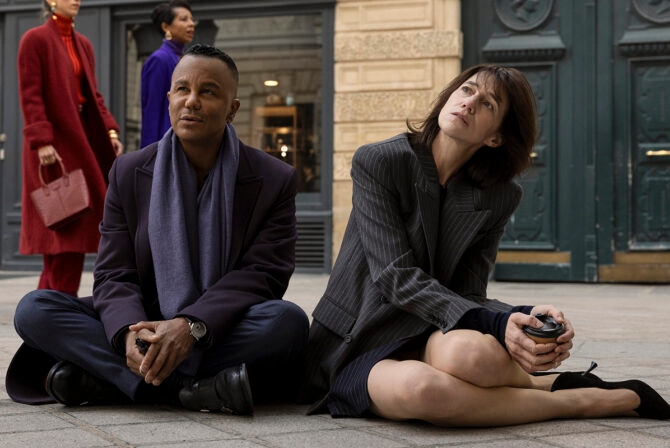A year from now, a friend I haven’t seen in a while might ask, “What did you do during the pandemic?” I will be able to answer, honestly, that I kept my family fed and my house clean, went to many Zoom meetings, and watched all 80 episodes of The Great British Bake Off.
The truth is, though, that I was already doing those things. The real answer is that during the pandemic I became an accidental minyanaire.
A minyan is the Hebrew term for 10 or more Jews gathered to pray as a community, as certain prayers can only be recited when there are 10 people present. Until Covid-19, I had a fitful record of attending morning minyan. When I was president of our Conservative congregation, I went on Wednesday mornings, every week, for two years. Attending the minyan gave me a chance to take the temperature of the regular attendees — the real minyanaires, almost all senior citizens who know the service by heart. Mostly men, they’d move through the service in a half hour; a little more if it’s Monday or Thursday, when the Torah is read. Morning minyan is not necessarily the religious service I’d recommend for those seeking a transcendent spiritual experience: It fulfills an obligation and then people move on with their days.
Nevertheless, I respected the minyanaires. They made it possible for those coming to say Kaddish, the Jewish memorial prayer, for those with a yahrtzeit or those still mourning the death of a parent, a spouse, a sibling or a child. I wanted to be that kind of person: reliable, steady, woven into the religious life of the community. But early morning meetings, workouts at the gym, or the pure laziness of not wanting to leave the house when there was a world of content on my iPhone to explore, all served as my excuse not to show up after my time as president ended. For the past 15 years, I’ve gone to the morning minyan three times a year, to say Kaddish for my father and for each of my in-laws.
When Covid-19 hit last spring, our synagogue shut down. I was stuck at home, and I stopped eating, grew increasingly anxious, and couldn’t sleep. I worried about my 84-year-old mother in Rhode Island who has a chronic lung condition; our son in Los Angeles who has asthma; and our daughter, an ob/gyn resident in the Bronx, which, for a time, was the hottest spot in the hot spot that was New York City. I needed Jewish community, and specifically to pray with others. But how to find it?
I spoke to our rabbi about this need, and other congregants must have said something similar, because he announced that a Zoom morning minyan would be starting two days later. I’ve been there nearly every weekday since.
Showing up for morning minyan is much like deciding to start your day with yoga: You don’t always want to take the time to do it, but you know you’ll feel better afterwards. Like yoga, there is choreography: At different points in the service, we rise, we bow, we turn right and left and center, we sit. Beginners take a while to catch on, but the old timers know all the moves. The difference is that with yoga, or meditating, or even private prayer, no one else is counting on you to land on your mat or in the lotus position. A minyan, by contrast, even if it’s on Zoom, requires ten people and starts on time. I often have trouble making the 30-foot commute from my bedroom to my laptop in my home office for the start of the service.
At 8 a.m. exactly, I settle into my seat, gently lay my tallit around my shoulders, and open the siddur, the daily prayer book that my rabbi gave me to use at home, to page 6, the first set of morning blessings, the birkat hashachar. I press the icon for Zoom my screen fills up with familiar faces in their Brady Bunch-like boxes. Over the last year, we have indeed become a blended family of sorts. We’re a different group than in our typical synagogue minyan crowd — about half are women, and the attendees skew younger. These are people who, pre-pandemic, would be on their way to their offices when minyan starts in the synagogue.
Online, our rabbi leads the service. Over his 23 years with us, his once dark hair has turned a distinguished gray, a visible symbol of his care and devotion. Today, he is pale, his warm brown eyes tired behind his horn-rimmed glasses. He’s wearing a suit and tie. We’ve learned this means that, later in the day, we’re likely to see a shiva announcement in our email inbox. The losses happen off-screen, leaving us disconnected from loss and grieving friends. My 95-year old friend, a man I’d known for 30 years, and who I used to chauffeur to meetings and services, contracts Covid-19 in early spring and dies, before I could call him and see if he’d come to Zoom minyan. Without a chance to sit in the pew at the funeral chapel and hear the eulogies for his extraordinary life, my grief at the loss of my friend and mentor has no container, no resolution. Instead, it rises up unexpectedly to assault me repeatedly at minyan, when Kaddish is recited.
On the other hand, here is another favorite congregant; he’s over 90 but still managing to Zoom in. He knows the service by heart, and his baritone comes in and out of the microphone in my computer, bits of Hebrew and English, a counterpoint to the smooth flow of the traditional sing-song morning prayers that follow a prescribed order. My friend from mah jongg, who recently finished her year of saying Kaddish for her father, is the minyan co-host, so she is always in my upper-left hand corner, and Rabbi in the next square.
Zoom minyan isn’t so different from in-person minyan in its routine. We all have our customary seats, now in front of our computer screens. I am familiar with everyone’s Zoom background, their kitchens, offices, and guest rooms. And they see my cozy office, too, with my wall of travel posters and messy stacks of magazines, my husband walking in, making a copy of the Times crossword on our printer and wondering where the strawberry jelly is.
We mostly pray quietly, chanting aloud together at well-known points. The rabbi calls out page numbers so everyone can keep pace with him. “Page 21, our first Ashrei,” or “We’ve reached the start of our Torah service, page 65.” The Torah service presents a bit of a conundrum. I haven’t questioned the rabbi about the support in Jewish law for “reading” Torah and for reciting the prayers for the taking out and putting away of the Torah when in reality, we’re all just sitting in our homes and there is no Torah in sight. Instead, we maintain a fiction for the sake of creating community. I still rise for the Amidah and for Aleinu prayers, as I would do in the synagogue. It’s muscle memory; I was taught to stand for those prayers at my desk in Hebrew School and 9-year-old me is uncomfortable in my chair if I stay seated.
We read a few prayers in English, some of us claiming them as “our” prayer. I like to read Psalm 30 aloud. “Tears may linger for a night, joy comes with the dawn,” that psalm’s most famous line, has always been a lifeline for me, even more during the pandemic and this time of political unrest. Reading it out loud feels like a talisman against fear.
Now that there are changes in the White House, as well as effective vaccines and treatments for Covid-19, I’m feeling hopeful that sometime soon this terrible time will end. I’ve started to wonder about what will happen to my little Zoom family of “minyanaires.” Someday, soon, we may return to our offices and morning meetings. The prospect is uplifting — and yet, it’s saddening, too. I’m surprised how vital it has become for me to see these faces every morning, how much I rely on the sound of their greetings before we begin, and how I need their wishes of “have a good day” and “stay safe” as we log off.
I am grateful to the 15 regulars of our minyan for the camaraderie, the caring, and the community. They have been my connection to my faith as well as to the outside world. I imagine that the first day of morning minyan in the synagogue will be like re-entering the rest of post-Covid life: tentative, strange, life-affirming, and permanently altered. I will say “Shehechayanu” in gratitude as I enter the sanctuary. I will be grateful to HaShem, but I will acknowledge that it was my fellow minyanaires who helped me get there.
Header image by iNueng/Getty Images








